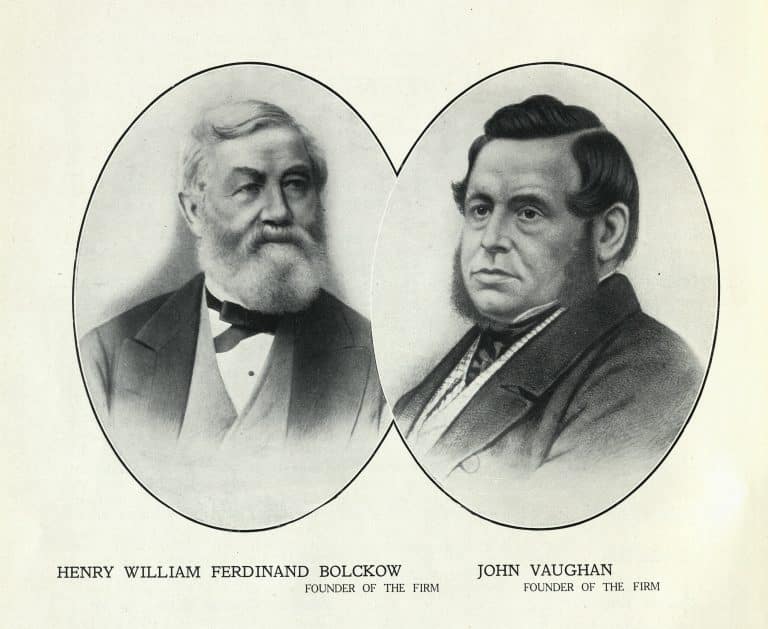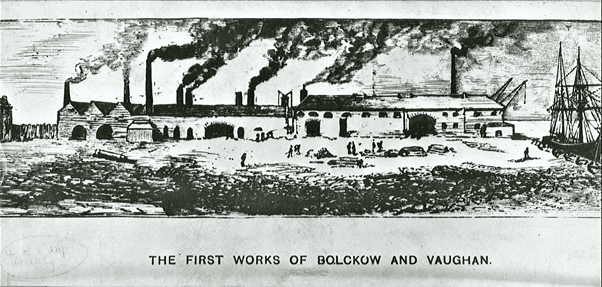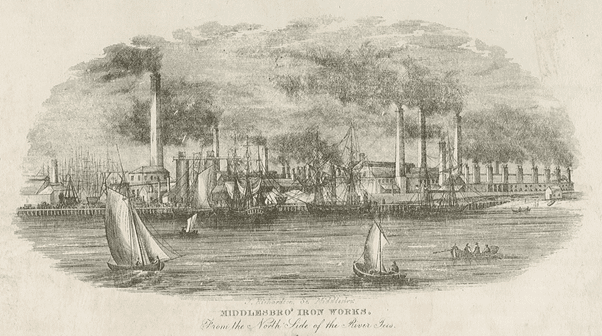Within 20 years of the staiths opening in Middlesbrough, the town would be transformed from a dependence on coal export to one that would be defined by iron – following the discovery of iron ore in the Cleveland Hills.

Founding ironmasters Henry Bolckow and John Vaughan – who in 1841 established works situated to the east of Port of Middlesbrough (close to where the Transporter Bridge would later be erected) – led the way in this development through the discovery of major iron ore deposits in the Cleveland Hills in 1850. In the ensuing decades the area would become known as the ‘Ironopolis’ as ironmasters from across the world set up works along the Tees and tens of thousands of people flocked to the area seeking employment in firms including Bolckow, Vaughan and Co, Sir Bernhard Samuelson’s and Bell Brothers – the latter located on the north bank of the Tees.
Did you know?
In 1853, a new council commissioned a coat of arms and a motto. The job was given to a Mr Longstaffe, the Town Clerk of Gateshead, and he chose a lion because it had been the symbol of the Brus family, once the lords of Skelton. The original Robert de Brus came over with William the Conqueror, and they ruled this part of England until the fourteenth century. The Brus family motto was the word 'Fuimus' which means 'we have been' in Latin. But Longstaffe suggested that the motto should instead be 'Erimus' or 'we shall be'.
Did you know?
A wharf is a level quayside area to which a ship may be moored to load or unload. This can provide more flexibility than a dock which often requires a vessel to arrive during high tide, at which time the dock gates can be opened. At Middlesbrough there were numerous wharves dealing with coastal and continental trade, and large quantities of foreign ore were imported at the private wharves belonging to the iron works.
Did you know?
In 1852, the Tees Conservancy Commissioners were formed, an autonomous public body which in addition to its conservancy functions to manage the River Tees also had powers to operate as a dock undertaking.

